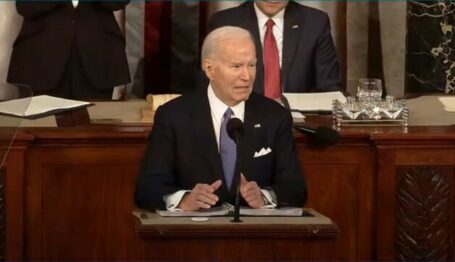Labor Watch
The United Auto Workers on the Skids?
Defeat in Chattanooga, a 25 percent dues hike, Michigan Right to Work, and promotions for failed leaders
It’s been a long, slow slide for the United Auto Workers, which hit its peak in the early 1950s. Defeated in a critical unionization election in the South and facing a critical change in state law in its home base in Michigan, the UAW has responded to the challenge by raising dues and by staying the course on policy and leadership.
Things have not gone well at Solidarity House recently, and may be getting worse.
When the headquarters of the United Auto Workers was dedicated on June 9, 1951, news accounts called it “America’s most up-to-date union headquarters . . . Streamlined and spacious but not plush, the four story brick and sandstone structure is nestled among swank hotel apartment houses overlooking the Detroit river.” It was said that the union’s “nerve center” would be “the envy of many top industry executives.”
The UAW was riding high, and it seemed appropriate that the UAW headquarters’ three-acre site had once been the estate of the late Edsel Ford, the son of Henry Ford and himself the president of Ford Motor Company.
The website Detroit1701, which celebrates the city’s history, describes the headquarters as “a very significant site, perhaps the most symbolically significant site, in the history of the labor movement in the United States. . . . Solidarity House was built in a very desirable location on Detroit’s riverfront at a time when the United Auto Workers were still celebrating their very favorable victory in a struggle with General Motors, Chrysler and Ford.”
That victory included the famous “Treaty of Detroit” with GM and favorable-to-the-UAW deals with the other automakers. Long-term contracts protected the companies against strikes, while the union received medical insurance and improved cost-of-living adjustments at GM, employer-funded pensions at Chrysler, supplementary unemployment benefits at Ford, and other perks.
UAW membership exceeded one million, at a time when the U.S. population was 150 million. Within two years of the Solidarity House dedication, total labor union membership in the U.S. as a share of the workforce would hit an all-time high, roughly one worker in three. Back then, Detroit was the fifth-largest city in the United States, and the wealthiest.
How times have changed—for the city that’s synonymous with the U.S. automobile industry, for the auto industry itself, and for the union that was once the nation’s largest!
Bad times
UAW membership peaked in 1979 at 1.5 million. In 2011, the UAW hit a modern-day low of approximately 355,000 members, and there was a slight recovery to about 391,400 in the union’s latest filings with the Department of Labor. [Click HERE for the rest of the article.]



